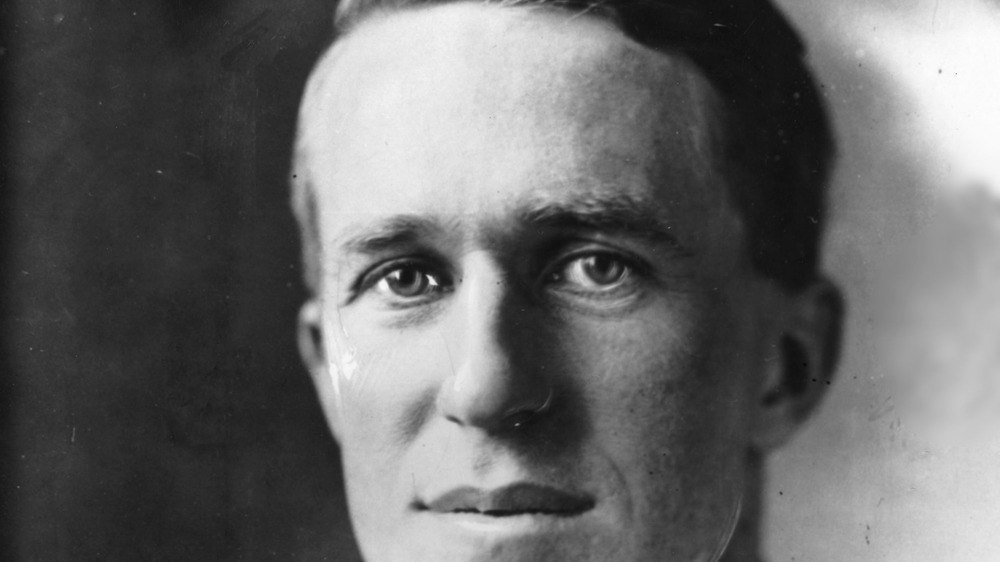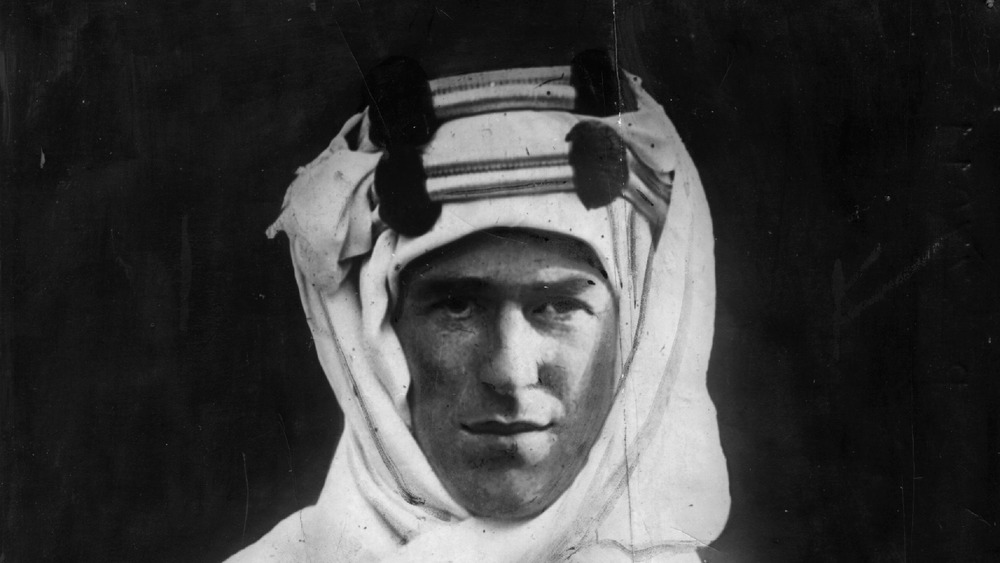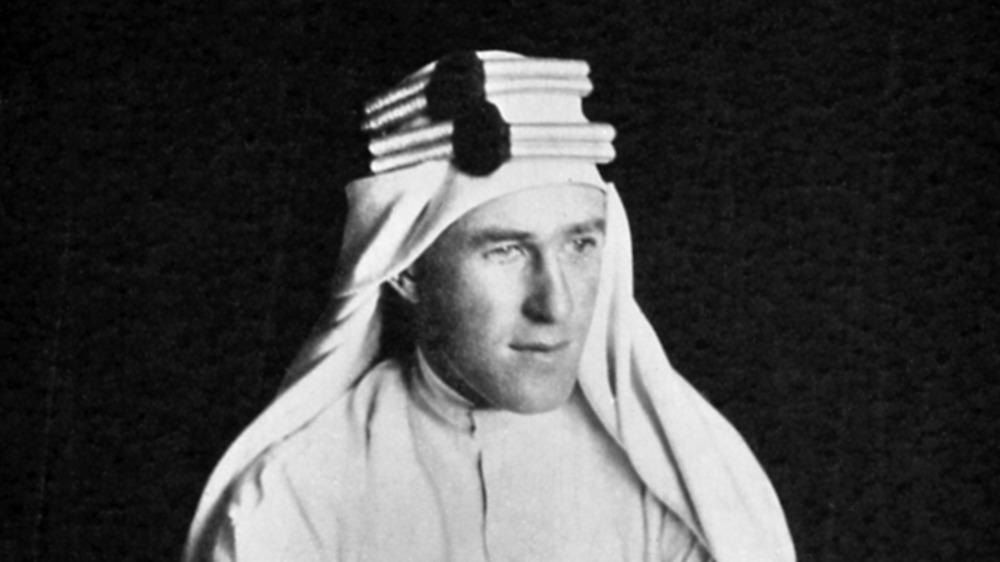The Plane Crash That Almost Killed Lawrence Of Arabia
If you're a movie buff, or a history buff — specifically, early 20th century British history — the name Lawrence of Arabia will certainly ring a bell. Born Thomas Edward Lawrence, the famed author, archaeologist and army officer was born out of wedlock to a nobleman father and a governess mother. According to Britannica, the young Englishman helped organize and lead military actions during the Arab Revolt against Ottoman forces from 1916 until 1918, earning the rank of colonel in the process. Following the war, he did serve a brief stint in the Royal Air Force (RAF), but Lawrence is most famously known for his autobiographical accounts of the Arab Revolt, namely The Mint and Seven Pillars of Wisdom, and translations of historic texts into the English language.
Per The Guardian, a tragic motorcycle accident in 1935 took the colonel's life at the young age of 46. But before the accident, Lawrence was involved in another transportation accident that nearly killed him.
He was considered a hero in his time
The Arab Revolt saw an uprising of Arab forces against the occupying Ottoman Empire during World War I. A month before the start of the war, Lawrence was a civilian employee of the Map Department of the War Office in London, only to become a lieutenant in Cairo by December 1914.
During World War I, experts on Middle Eastern affairs were rare, and Lawrence was promptly assigned to intelligence, where he spent more than a year interviewing prisoners, drawing maps, processing data from agents behind enemy lines, and producing a handbook on the Turkish Army. In time he moved to live with and fight beside Arab tribesmen against the Turks. During that time, he was severely wounded, captured, and tortured, and endured long periods of hunger, weather, and disease. Lawrence became an expert in guerrilla warfare, inventing tactics and techniques that are studied and utilized to this day, assisting the Arabs in their revolt.
"Lawrence trained himself, throughout most of his youth, to be a great hero," biographer Michael Korda told NPR. "He had in mind the liberation of Arabia."
A brush with death in the air
Immediately following the Arab Revolt, Lawrence worked for the British Foreign Office, attending the Paris Peace Conference as part of the delegation of Emir Faisal, one of the leaders of the Arab Revolt. During this time, he was earning his status as a highly regarded intellectual and diplomat.
On May 17, 1919, Lawrence was on his way from France to Egypt to collect his notes so that he could begin writing what would become Seven Pillars of Wisdom. According to Experimental Traveler, he boarded a biplane, piloted by Second Lieutenants Fredrick Prince and Sidney Pratt. The pilots of the biplane attempted to land at Roma-Centrocelle airport in Italy. The pilot overshot the runway and tried to land again, but hit a tree with one of the wings, 20 feet off the ground, causing the aircraft to crash. One of the pilots died instantly; the other later died of his injuries in the hospital.
Lawrence miraculously emerged from the wreckage, though suffering a broken shoulder blade and two broken ribs. During his brief treatment in Italy, he sent another survivor, crew member F.J. Daw, a £10 note in appreciation for helping him exit the plane safely. He was also paid a visit by King Victor Emmanuel III of Italy.


